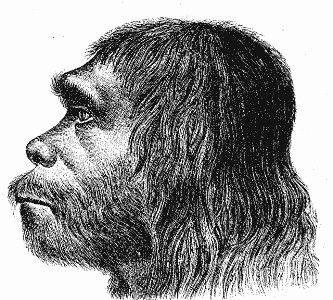SCIENCE & TECHNOLOGY
The Age of the Earth
Part 9: Who were the Cavemen?
By Steve Webb

To understand this we must first make sure we are clear on the definition of "human." If we are not clear on this definition everything else will be fuzzy in our understanding. Does the ability to make and use tools define a human? No. It has been shown that chimpanzees and even some birds will make and use simple tools? How about language? No. Most of the animal kingdom has various degrees of communication with each other. How about sentience, emotion and conscience? No. Again the apes display these traits to some degree. Purely from a scientific perspective it is difficult to precisely define Homo sapiens.
The Bible is not as nebulous on this subject. It tells us that modern humans are not the end of an evolutionary chain. At one point in Earth's history God created ex nihilo a human from the clay of the ground and breathed into Him the breath of life. This new creature stood apart from everything else that had ever stood on Earth in that it was made in God's image. That is the definition of human. We are creatures that are made in God's image. We must not mistake this for physical appearance. It would be unthinkable that this refers to God's physical appearance. In this regard we do not know to what degree Adam and Eve looked like modern humans. Instead, the "image of God" has to refer to God's character. While we do not know exactly what this means, we have some idea in that we are creators (we build with great passion), we are sentient, we have consciences, we have intense emotions, and we have free will.
How does this apply to the other pre-existing hominids? The answer quite simply is that they were animals. Some of them may have built fires, wore clothing and painted on walls, but they were not made in the image of God. This is not to demean or degrade them in any fashion. It does not infer that they were stupid brute-like creatures. God will deal compassionately with them the same way He will deal with the rest of the animal kingdom in the New Creation.
Having said these things does not resolve all the questions we would like to understand. The Neanderthals existed long before modern humans (Homo sapiens) but partly coexisted in time and even possibly interbred. What are we to think of the Neanderthals? The simple answer is: I don't know. But based on my preferred time-line for the appearance of Adam I tend to believe they were animals, i.e. they were not created in the image of God. My conclusion still stands even if there was some interbreeding. Having similar DNA, and even a similar physical appearance, is not what defines a human.
Image source: Hermann Shauffhassen; First reconstruction of Neanderthal man; Public Domain
Age of the Earth: The Series
Part 1: IntroductionPart 2: Radiometric Age-Dating
Part 3: Dinosaurs
Part 4: Tree Rings
Part 5: The Meaning of Yom
Part 6: Other Scriptural Difficulties
Part 7: Noah's Flood
Part 8: Hebrew-Judaeo Worldview
Part 9: Who were the Cavemen?
Part 10: The Garden of Eden
Part 11: Bible Genealogies
Tags: Controversial-Issues | Current-Issues | Science-Creation
comments powered by Disqus
Published 3-10-14

